Intro to Economics Management: Free Online Course

Welcome to the Economics Management Stack. This free online course was constructed to help you further expand your unique talent stack with an introduction to the evolving world of economics.
We will cover a general overview and the foundations of economics and its history, then take a good look at some of the changes and opportunities in the field and end with ways to build up your Economics Management Stack.
Build your talent stack in Economics Management.
A little about this course…
This online course will provide you with free videos, podcasts, articles, and resources. Each section will offer two to three hours of learning material for your Economics Management stack.
At each section’s conclusion, there will be an opportunity to invest in your learning. While this free online course can stand alone as a great introduction to economics, we encourage you to consider how what you learn here can help you build out your economics stack and maybe even consider other educational avenues, such as an advanced degree like an MBA.
The World of Economics
What Is Economics?
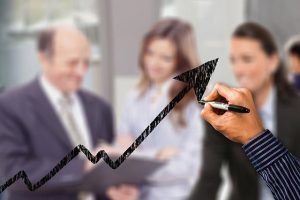
Economics is focused on the production, distribution, and subsequent consumption of goods and services and the decisions made by consumers, businesses, governments, and other organizations about how they allocate resources.
It is focused on human action and assumes that humans are acting rationally in their choices. A crucial principle for economics is that humans have unlimited wants and are constrained by limited resources.
When we hear “economics,” we often think of money or the stock market. But, while those things are connected to economics, the field is so much more than that. And as we already discussed, economics is primarily about decision-making. Economics impacts so many of our decisions, from personal to global.
Think about your life and the events and circumstances around you.
- Can you make a list of ways economics is the decisions you’ve made, personally or professionally, or decisions you’ve been impacted by that organizations or governments have made?
If that’s a challenging task (or even if it isn’t), once you’re done, watch this video from Crash Course as they cover the basics of economics (and give some examples).
If you enjoyed that video from Crash Course, check out the rest of their economic series. This 35-episode series uses college-level content to give you a broad understanding of economics. They cover the fundamentals of the field and help you learn how to apply economic analysis in real situations.
Micro and Macro
Chances are probably pretty good that you covered macro- and microeconomics, at least to some extent, in your educational history. But for a refresher, these are the two primary disciplines of economics.
Microeconomics is concerned with individual behaviors. Macroeconomists seek to understand how and why individuals value goods, make financial decisions, and respond to changes by studying things like:
- labor allocation,
- organizational structures,
- supply and demand dynamics,
- and individual risk calculations.
Meanwhile, macroeconomics is concerned with economies on a large scale. Macroeconomists look at:
- inflation rates,
- unemployment rates,
- foreign trade,
- governmental monetary policies (as a few examples) to understand economic cycles.
When you hear about economics on the news, it’s usually focused on macroeconomics. Take some time to find out more in these articles on macroeconomics and microeconomics to ensure you have a solid grasp of what each is.
- How are they different, and how do they inform each other?
Rational Behavior
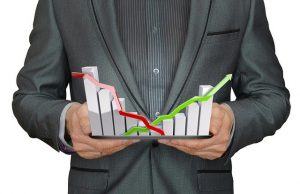
As we briefly mentioned, economics is concerned with choices and works on the assumption that people are rational in their choices and actions. In short, the theory is that people seek the most benefit with the least harm – at least, this is a classical economic theory.
Think of benefit and harm broadly. So, what does this have to do with economics? Economists use this theory to create their models.
An easy example is supply and demand. The theory is that if something is more expensive, a person will want to sell more of that something but buy less of that something. Dig deeper into this idea of rational behavior in economics in this article.
- Can you think of examples in your life where this theory of rationality has played out?
- What about some examples where it hasn’t?
- In that instance – can you justify that your behavior was truly irrational?
- Where might rationality, in fact, exist in your decision (if it does anywhere)?
Investment Opportunity
Check out this microeconomics Coursera course from the University of Illinois. This seven-week course will help you understand the fundamentals of individuals within a larger economic system.
If you’re interested in expanding your stack with macroeconomics, this edX course from the International Monetary Fund will provide you with opportunities to learn analytical tools to understand economics at a country level. This self-paced course will take around six to eight weeks to complete.
Foundations of Economics Management
8th-Century Basics
Perhaps the first economic concepts to be recorded (in the Western world, at least) came from the Greek poet Hesiod in the 8th century. His poem Works and Days introduces three concepts still foundational to our understanding of economics today. What are those, you might wonder?
- Envy,
- Scarcity
- and Shame.
If you’re up for some 8th-century BC poetry, you can read Hesiod’s poem for yourself. Or you can listen to this piece from NPR about it to consider how these concepts are still applied to today’s economic thinking.
- What are some examples of envy, scarcity, and shame that you can give in our current economic context?
Wealth of Nations
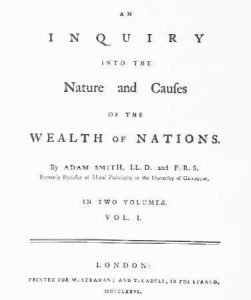
Galloping ahead several centuries, we arrive at Adam Smith and An Inquiry Into the Nature and Causes of the Wealth of Nations in 1776. Perhaps you read it back in your AP History class in high school, but here’s a summary to jog your memory.
Smith is viewed by many to be the parent of modern, Western economic thought. Some of the major themes include:
- the importance of free markets,
- the regulatory nature of competition,
- nations’ wealth generation coming from goods and services,
- and lack of government intervention in the market.
At the core, Smith felt that, by acting in their own self-interest, individuals had the power to create both economic and social stability for all.
- As you reflect on the synopsis of the Wealth of Nations, in what ways do current economic structures follow Smith’s themes, and where do they depart?
- What are the ramifications of each of these directions?
Still More Scarcity
Arriving at the Industrial Revolution, we come to Thomas Malthus. As populations grew at a faster pace than ever, Malthus was concerned that the food supply would be destroyed. You can read about his concerns in An Essay on the Principle of Population.
- What are the major themes, and in what ways is Malthus’ work applicable today?
It turns out that as populations grew, so too did innovations to help our food supply keep pace with the ever-growing demand (at least for certain populations and at least thus far). What is particularly impactful is that Malthus marks a turn for economics towards a scarcity mindset rather than a demand mindset.
Keynesian Economics
By the early 1900s, John Maynard Keynes arrived on the economic scene, fundamentally changing the theory and practice of economics and the role of government in economic policy. Keynes’ work originally came out of a desire to understand The Great Depression, and his primary theory is that governments should spend money on social needs in order to improve the economy – think:
- Healthcare,
- Education,
- Infrastructure,
- and Unemployment Benefits.
Today, much of the world runs on Keynesian economics. This video and this article bit more in-depth into Keynes’ work and influence.
- Can you point to areas where policies drift away from Keynesian economics, and what is the current state of Keynesian economics today?
Exploring Capitalism
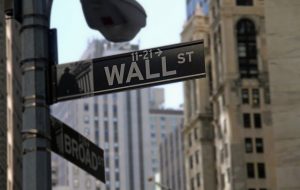
For better or worse, we live in a capitalist economy. There’s simply far too much to say about capitalism that can be condensed into this free course, but the Who Makes Sense Podcast holds a wealth (pun intended) of history and knowledge for you to explore.
The podcast interviews historians about how capitalism has changed over time and given rise to our present. You will not be able to get through all of these episodes in a few days but pick and choose a few of interest.
- Where do you see the ideas and theories you learned about in this course in the episodes you choose?
Investment Opportunity
Continuing building your economic stack by enrolling in the Introduction to Economic Theories course from Erasmus University Rotterdam with Coursera. In this course, over about 41 hours, you’ll learn about theories of Institutional, Neoclassical, Post-Keynesian, and Social Economics from an economic pluralist perspective to further develop your economic foundation.
This pluralist approach will help you identify and understand holes in economic theories and how to apply theories practically. This is a beginner-level course.
Changes in Economics
Labor Shortages
In case you haven’t heard, we’re currently experiencing a labor shortage in the U.S. There are far more available jobs than people looking for work, and this is having major impacts across the country. Shops and eateries are reducing hours. More places are offering hiring and retention bonuses. And yet, the shortages remain and don’t seem to be going away anytime soon.
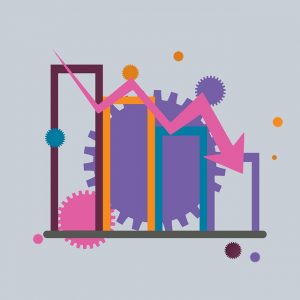
What’s causing the labor shortage? Secretary of Labor Marty Walsh gives three reasons to consider in this article: “unprecedented times,” concerns over health and safety, and a reevaluation of the role of work in people’s lives.
- As you read the article to gain more context on why Secretary Walsh names these three reasons for the shortages, how is the assumption of rationality at play?
- What about scarcity?
- What other economic themes or theories are you seeing regarding these reasons?
This piece from Marketplace identifies an aging population as another reason for the shortage. Apply these same considerations to this reason.
These are certainly not the only reasons for the labor shortage, nor are they mutually exclusive.
- What are some other contributing factors, and what are the intersections in terms of economic impact?
- As an economist, what do you see as the driving factors, and what would your suggestions be to shrink the labor gap?
- Emory Economics Review offers a solution. Is it the same as yours?
- What do you view as the role of economists in these types of social and economic shifts?
Climate Concerns
The climate is increasingly a pressing topic of interest for economists. Given the climate events impacting every corner of the globe for the past number of years, the pressure to understand the economic ramifications of climate change is obvious and timely.
- In what ways does climate change currently impact the economy, and what might the impact look like in the near future, given the rapid changes in global climate concerns?
This piece from the World Economic Forum lays out some answers to these questions.
How should economists focus their attention when it comes to climate change economics? Are economists sufficiently attending to this matter? This conversation from Economists for Future looks at the shortcomings of the field in the climate crisis and what meaningful action can be taken within the field of climate change economics.
- What do you see as the role of economists in responding to climate change (if any)?
If you’re interested in building your stack in the economics of the environment, check out the Climate One podcast hosted by Greg Dalton. Dalton has been doing this podcast since 2007, so there’s a wealth of conversations with economists, activities, policymakers, and scientists to learn from.
Inflation and Interest Rates
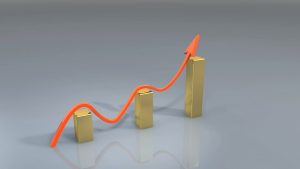
There are a lot of discussions right now about inflation and interest rates. The two are often linked when it comes to macroeconomic conversations.
Interest rates in the U.S. are determined by the Federal Reserve and are the amount a lender charges to a borrower.
Inflation refers to the rate at which prices rise. Learn more about interest rates and inflation here.
- With rising inflation and talk of raising interest rates in the U.S., as an economist, what is your understanding of why inflation is rising?
- This piece from Forbes lays out some reasons – do you concur?
- And what is the solution to combatting inflation?
- What economic theory are you basing your solution on?
Investment Opportunity
Become a member of the National Association for Business Economics. The NABE is a professional association that was founded in 1959. Its members work in the fields of academia, business, and economics. As a member, you’ll have access to the following:
- career development;
- conferences,
- training,
- webinars,
- and other events;
- certificate programs;
- networking opportunities;
- and a subscription to Business Economics.
Opportunities in Economics Management
Behavioral Economics
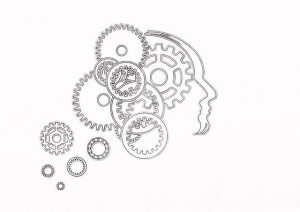
Behavioral economics is one area of the field that is rapidly expanding thanks to many organizations incorporating behavioral economic theory and practice.
This article from the University of Chicago lays out the history of behavioral economics, common terms, and some key principles. Be sure to listen to the two podcast episodes linked in the article to provide even more information and context as you build your economics stack in behavioral economics.
- What aspects of behavioral economics are similar to other areas of economics we’ve already explored?
You might want to consider a career in behavioral economics if you are curious about why people make the choices they do. And as an increasing number of organizations continue to adopt behavioral economics to help shape effective change, career opportunities as a behavioral economist are expanding.
Prioritization
Economics is linked to basically everything in our world. It’s really easy to think of economics as the economy. But, as we’ve discussed, economics goes beyond money and markets. Economics is about choices, and all choices involve a level of prioritization.
Economics offers an opportunity to help shift organizational systems and structures. This article gives a great outline of economic prioritization in shaping institutionalized change.
- What economic theories do you find in this article?
- What is the opportunity to look at organizational structure through an economic lens?
On a broader level, what we prioritize as a society and nation also has economic implications. This article from McKinsey explores how prioritizing health can have a positive impact on the economy. Before you read, consider how, from an economic standpoint, this prioritization might help rebuild economies.
- And what does it mean, for you, to “rebuild” an economy?
- What things do you believe need prioritization?
- What does a “strong” economy mean for you, keeping in mind that the economy, again, is larger than the monthly job report and interest rates?
Green Economics
Thinking about economic prioritization, green economics is one area of the field of economics some argue needs more prioritization, as we explored in the previous section of this course. If you’re looking for a bit of background into what it means when we say green economics, you can lay out some framework from this article.
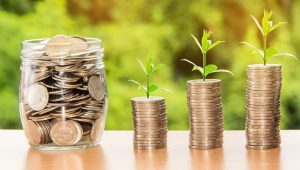
Green economics is both the individual and the collective, like all economics. And for some, it’s their top priority. But for many, it isn’t – it might not be for you. In this TED Talk, advocate Angela Francis explores how to help skeptics see the benefits of going green.
- Taking this talk as an example, can you lay out how green economics ties in with prioritization, choice, Keynesian economics, capitalism, or any of the other topics we’ve discussed in this course?
As the article from McKinsey explored, prioritizing one area of society can have an overall economic benefit. Taking the prioritization of the green economy as another example, watch this webinar from the Green Policy Platform, Innovative Solutions for MSMEs in a green recovery. The webinar looks at how initiatives for micro-, small and medium-sized enterprises (MSMEs) are playing a role in economic recovery in their areas.
- Do these initiatives spark the potential for other economic opportunities for you as an economist?
- Taken within a larger global economic framework, what potential do you see in these initiatives?
- What about at a more micro level?
Investment Opportunity
Pick up a copy of Even Better If: Building Better Businesses, Better Leaders, and Better Selves. This new book helps leaders learn how to respond to their employees using scientific studies of choice and drawing on insights from experts and leaders in the business world. If you’re interested in how behavioral economics can shape workplace culture, this is a practical book to add to your stack.
Economics Management Talent Stack
Get Familiar with Indicators

Economists are in the business of predictions, but they aren’t blind predictions – they take into account a variety of statistics that give them insight into the economic future by indicating changes.
These statistics are known as economic indicators because they, well, indicate what might come to pass before we see those changes reflected in economies.
This is useful foundational knowledge for your economics stack, especially if you’re focused on the macro side of economics. But, as we’ve discussed, the macro and the micro work in tandem in economics.
- Looking at some leading economic indicators and what they are doing right now, can you make some predictions for what could happen in the economy in the near future?
The Economist’s Societal Role
As the focus of people’s choices and leading economic indicators indicate, economics isn’t a hard science. It’s a social science. As a result, sometimes what economists say will come to pass doesn’t. This episode from the Marketplace “Make Me Smart” podcast dives into the role of the economist in society.
- As you listen, how do you think governments, organizations, and people should respond to what economists forecast?
- What is the role and responsibility of economists?
- Does this understanding shape your career trajectory and how you build your economics stack?
Keep Learning

We should all strive to be lifelong learners. You can always pursue an advanced degree in economics, but there are so many other opportunities to build your stack outside of a traditional academic program. And there are many other career trajectories you can consider outside of the title of “economist” as well.
Here’s a list of types of courses to take to help you build your skills, from soft skills to hard skills. Revisit your career goals.
Have you laid out specific steps for how you’re going to get where you want to go? If not, take some time to research the courses and options available to you so you’re making the most of your opportunities and your skillset. Because economics dips its metaphorical toes into all kinds of pools, expanding your knowledge base and understanding of a variety of disciplines will help you build a stronger economics stack in the long run.
Despite economics being a social science, you’ll also want to make sure you’ve got a solid mathematical foundation. Math in economics is mostly algebra, calculus, and statistics. Economists use algebra to determine things like costs and revenues, calculus for things like profit curves and growth models, and statistics to forecast probability.
If you are interested in brushing up on how economics relies on math, here’s a quick overview for you to read through.
You can always start with the first class and if it’s a valuable level for you, continue with the subsequent classes in the course at your own pace.
Investment Opportunity
Take an economic indicators course. This one from Accounting Tools is aimed at accountants, but as we’ve talked about, there are many career trajectories economists can take and intersections with other fields.
Taking an economics course through an accounting lens may provide you with a different vantage point to consider the subject matter. In this course, which will only take a few hours, you’ll learn about the business cycle, review economic indicators, and look at reports from the Federal Reserve.
How do the fields of Economics and Finance differ?
- Economics is the study of how society allocates its resources, while finance is the study of how individuals and organizations manage their money, investments, and risk.
- Economics focuses on the macroeconomic environment and how it affects decision-making, while finance focuses on the microeconomic decisions made by individuals and companies.
- Economics looks at the big picture and examines how different economic policies affect the economy as a whole, while finance looks at individual decision-making and how it affects the economy.
Congratulations on completing our free course in Economics Management!
To Wrap Things Up
- This is the end of our free online course to help you develop your economics management stack. We hope it gives you a solid foundation to build on. Thank you for participating!
- Managerial economics offers a wide variety of career options for those who have completed management courses in game theory, international management, economic environment, health economics, risk analysis, consumer behavior, production analysis, and more.
- You’ll be prepared to make critical business decisions, as well as develop knowledge and analytical skills in the core principles of competitive strategies.
Written by: Tammie Cagle
Before you go, see the following:
- Finance Management Online Course
- The Cheapest Online MBA in Finance Schools
- The Cheapest Online MBA in Supply Chain Management Schools